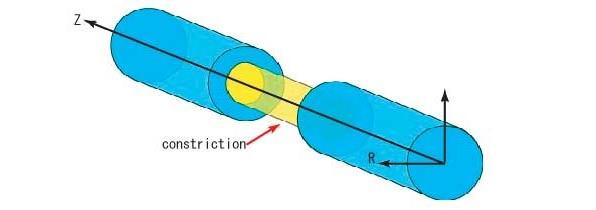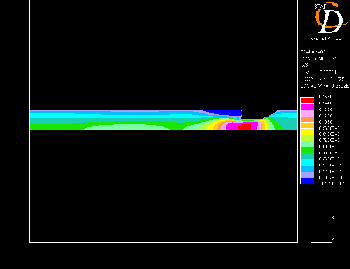Research
Pulsatile Flow Through the Circular Pipe with Banding

Ventricular septal defect (VSD) is one of the most common congenital heart diseases. When there is a hole between the ventricles, blood from the hearts left side is forced through the defect to the right side. In the right ventricle (Fig.1), this blood pumped to the lungs, which results in more blood than normal being pumped to the lungs. This leads to high blood pressure in the arteries in the lungs and on increase in thickness of the arterial walls. As a result, it may be difficult for the lungs to function efficiently.
Although most of VSDs will get smaller or close by themselves, medium-sized and large-sized VSDs may need to be closed surgically. In case of infants, it is often possible to wait for several years as damage to their body due to surgical treatment is taken into consideration. Instead of that surgical treatment, the pulmonary artery is banded temporary, which will lead to decrease in blood pressure in the lungs. However, the treatment of the banding of the pulmonary artery greatly depends on experience of the surgean, and the effect of the shape of the banding on blood pressure and flow pattern has not been clarified. Therefore, in this study, pulsatile blood flow model with banding was developed and pressure and flow rate in the artery was experimentally and numerically analyzed.
Firstly, pressure and flow rate in the pulmonary artery was numerically analyzed. In order to make the analysis simple, axisymmetric cylindrical model was developed (Fig. 2 and Fig. 3).


The pulsatile velocity (Fig. 4) was applied at the inlet of the model, and the velocity in the artery was obtained (movie).

From this result, it is shown that the flow separated at the end of the banding position when the velocity of the inlet pulsatile flow is the maximum. Furthermore, it is also found that the region of the reverse flow around the separation extends downstream. Pressure loss at the end of the banding position was more than 50 (Pa) smaller than that of the straight tube. The pressure loss was depend and on the shape of the banding, and when the diameter of the banding was more than 30 % larger than that of the tube, the pressure loss becomes much greater.
We are now trying to develop a model which is more similar to the pulmonary artery and the flow inside will be analyzed together with the experimental study.
